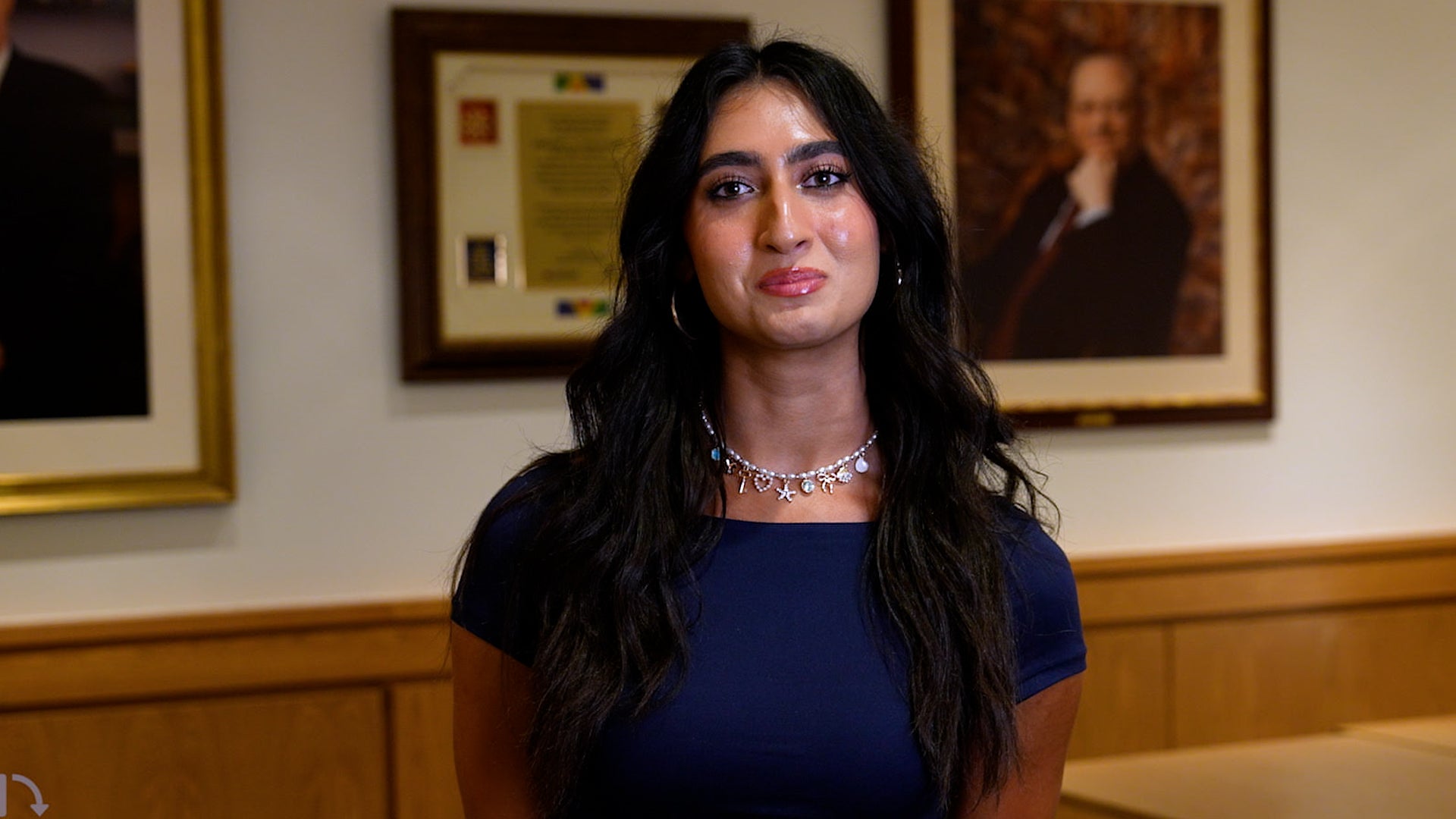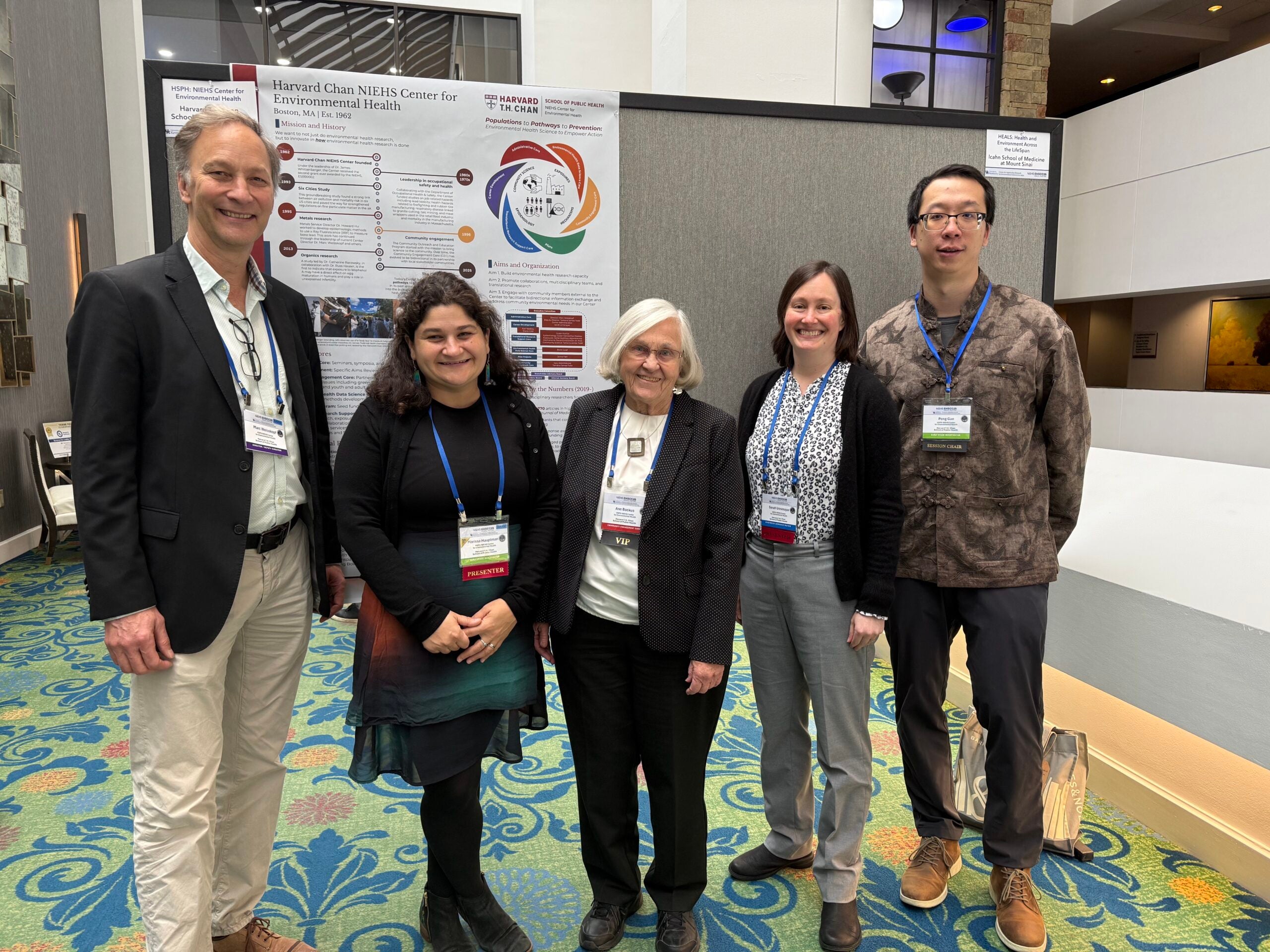Turning research into reality: what is health literacy and why is it important?
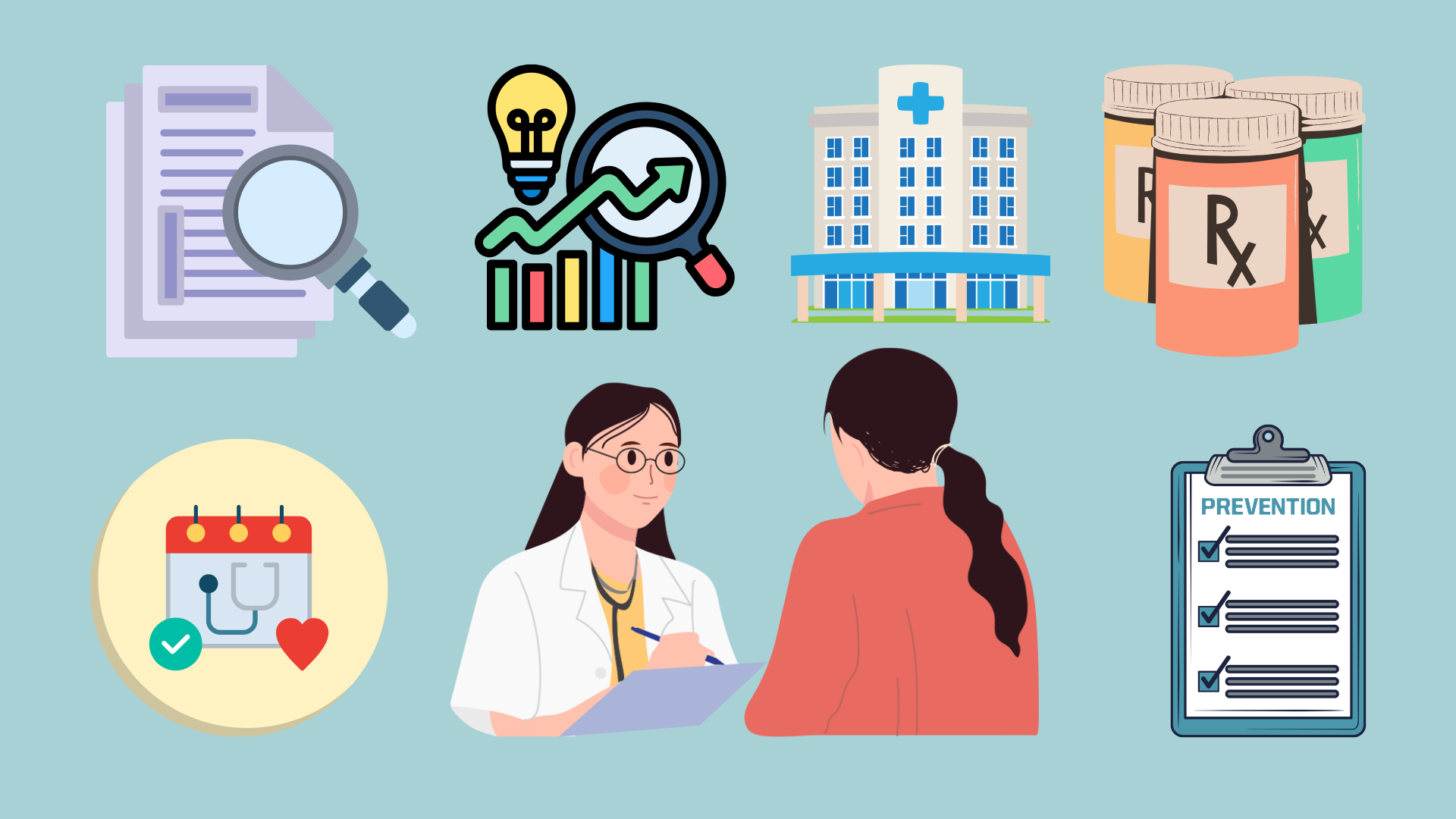
Information about our health is everywhere – literally. But what happens when we can’t access, understand, or use it appropriately?
This is where health literacy – the bridge that closes the gap between scientific evidence and everyday life – comes to play. Whether you’re a patient, researcher, or healthcare provider, we all have tremendous opportunity to translate scientific information into better health. Let’s look at ways we can make health information clearer and more useful for everyone.
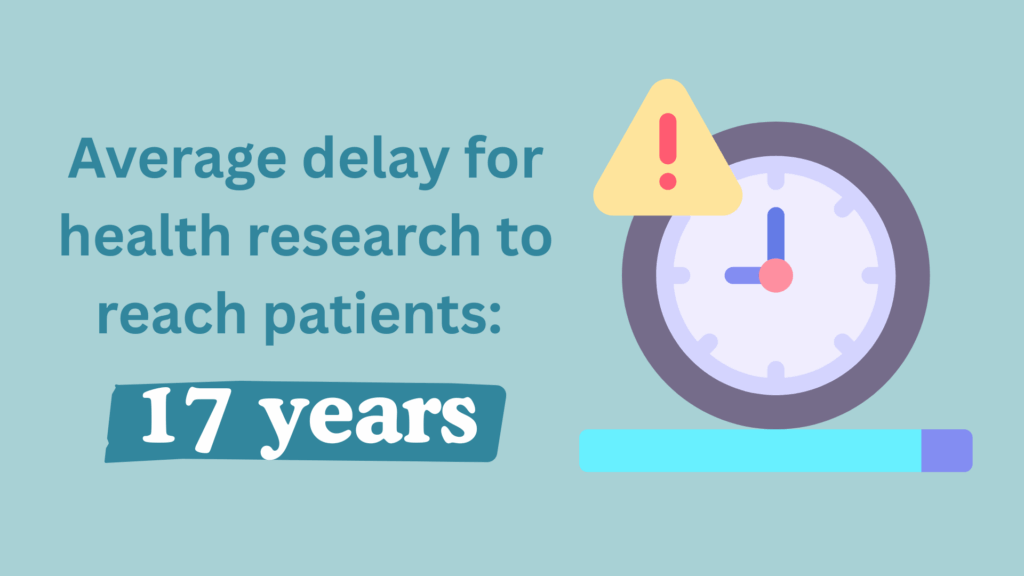
What is health literacy?
Health literacy is more than the ability to read. In fact, Healthy People 2030 defines health literacy in two ways:
- Personal health literacy is described as “the degree to which individuals have the ability to find, understand, and use information and services to inform health-related decisions and actions for themselves and others.”
- Organizational health literacy is the “degree to which organizations enable individuals to find, understand, and use information and services to inform health-related decisions and actions for themselves and others.”
Both personal health literacy and organizational health literacy are important. These definitions emphasize the role of informed consent and autonomy in our everyday life. They also acknowledge that health information is designed to be used, and that health choices should be as well-informed as they are appropriate1.
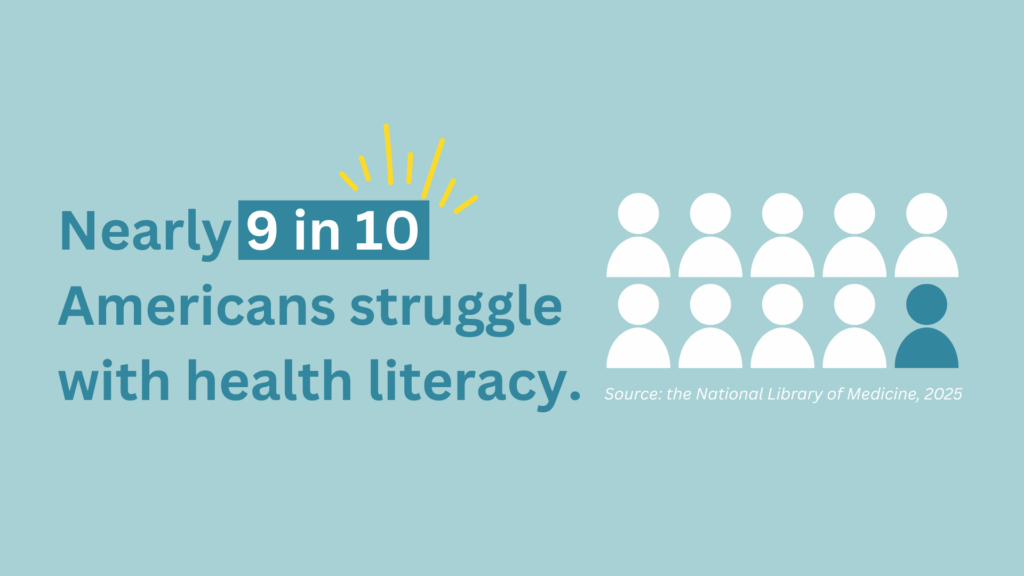
What is the status of health literacy in the United States today?
Health literacy continues to be on the decline for Americans. Let’s break down some key statistics on the current status quo:
- Literacy levels have dropped to record lows for American teens2. They are dropping for American adults as well3.
- Clinical research takes an average of 17 years to reach real clinical practice4, like a doctor visit – for those that even have access to health care to begin with.
- Most health information available online is currently written in a way that is too complicated for at least half of Americans to access or understand it5. The readability of information for patients, still, has not improved in half a century6.
These gaps put many groups of Americans at higher risk of delays in care and worse health7.
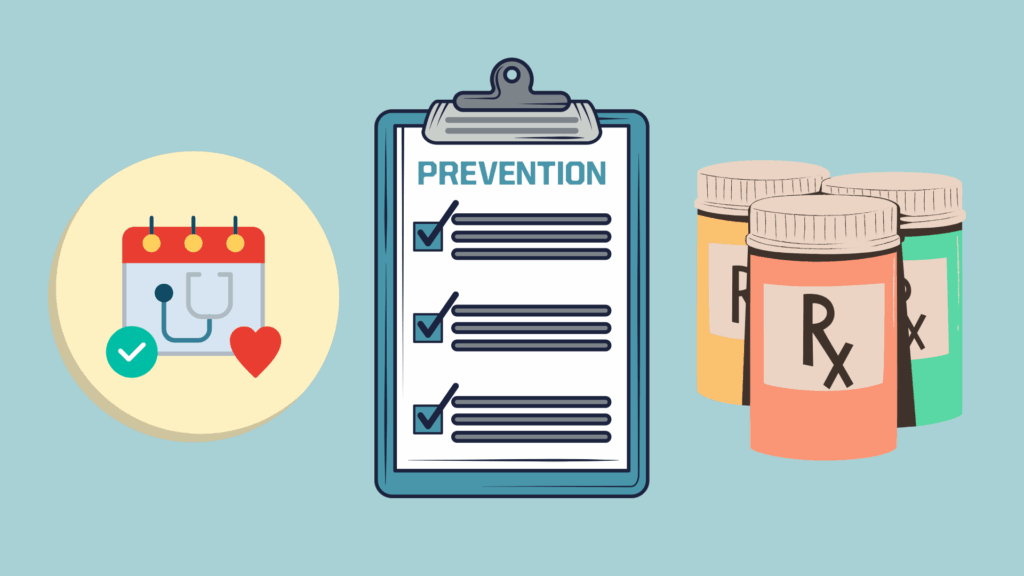
Benefits to improving health literacy
Improvements to health literacy are a win-win to both patients and their health care teams. Research has shown that improvements are not only possible, but highly beneficial. For example, they can result in:
- More usage of preventative services (such as Pap smears or flu shots), so that major health problems may not occur as often or as severely down the road7;
- Improvements in how often patients take their medications as prescribed7;
- And better conversations and shared decision-making between patients and their health care teams7.
Clear, accessible health information is especially important in reproductive health, where decisions can have lifelong effects.
What can we do to improve health literacy?
All of us can take steps to improve health literacy, both for ourselves and for others who navigate the healthcare system. Check out specific tips and resources for patients, researchers, and clinicians below.
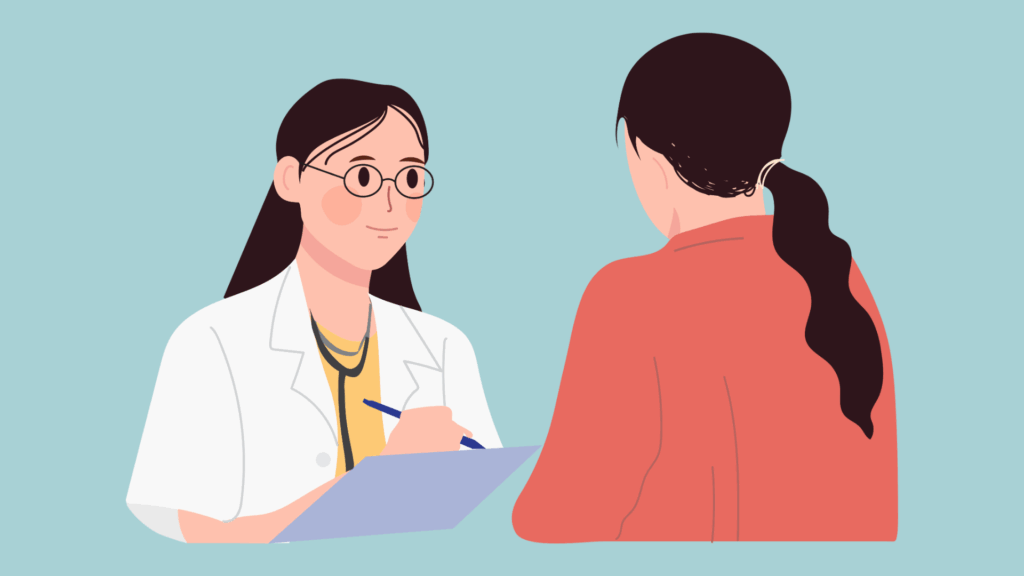
For patients:
Your voice is important when it comes to your health. Read on for a few tips about how to have better conversations about it and ways to learn more about your body so you can feel more confident in managing it.
One great way to get curious is to use the “Ask Me Three” method. Try asking the following next time you have a doctor’s appointment:
- “What is my main problem?”
- “What do I need to do?”
- “Why is it important for me to do this?”
Remember, there is no such thing as a dumb question when it comes to your health. If you still feel confused, you can also try asking: “Could you explain that another way?” or “Here’s what I heard. Did I get that right?”
Having someone with you to help take notes, ask questions, and advocate for you can be helpful. Besides a friend or family member, one great option is to use a professional patient navigator, if one is available to you. Their role is to guide and support patients through the healthcare system both directly and behind the scenes8.
You can never know too much about your own body. Knowledge is power, especially when it comes to your reproductive health. Check out a few resources below:
- Our Bodies Ourselves: Our Bodies Ourselves produces clear, reliable information on all aspects of reproductive health at every life stage. Example topics include pregnancy and birth, mental health, growing older, and more. All information is vetted thoroughly and free from ads/disinformation.
- Introduction to Reproduction 101: Free Online Course: Do you have questions about sex hormones or menstrual cycles? Check out this free, university-created course to answer your questions about reproductive health across the whole lifespan.
By contributing your time and insight to health research, you can make a big difference and help scientists advance knowledge that can be used to improve lives and patient care. Check out what the Mahalingaiah Lab is studying here.
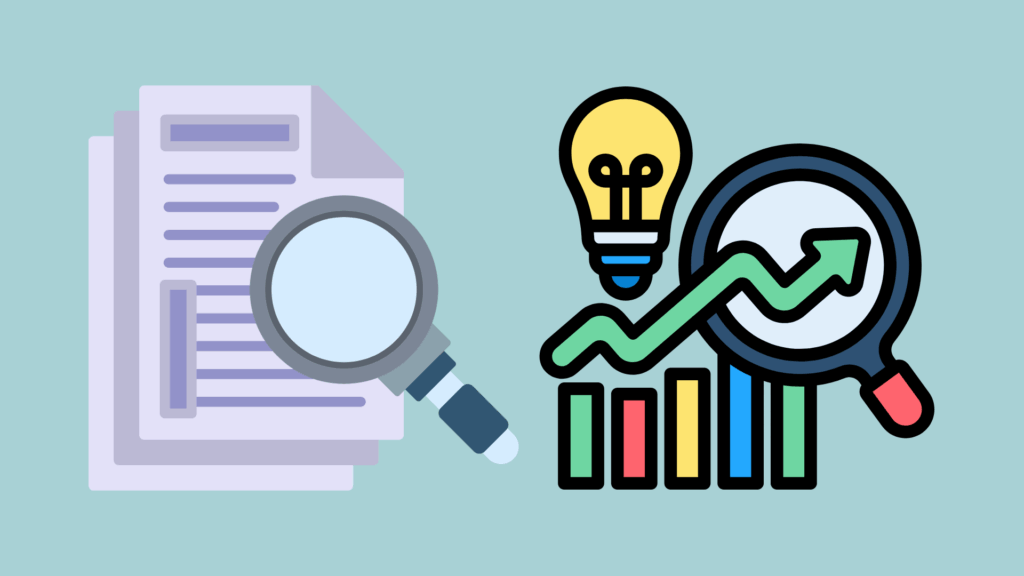
For researchers and academics:
While patients can benefit from learning and asking questions, researchers have a unique opportunity to make their findings accessible to the broader community.
Did you know that including a plain language summary of research findings can help your findings make more of an impact? Breaking down complex constructs and scientific jargon in a way that’s easy for everyone to understand can also boost public interest in supporting your research topics.
Check out a few more tips below:
About 90% of Americans use social media to search for health information9. Sharing your findings online in a way that is clear and accessible can make a big impact and help avoid misinformation.
Is your work behind a paywall or otherwise hard to access for people outside of academia? It can be helpful to just share your findings directly with relevant groups, straight from the source.
- For example: Try reaching out to a nonprofit that advocates for people with a health condition you’ve studied. It can be as simple as sharing your findings with them in a few bullet points via email so they can be in the know.
And of course, if you’re able to, it’s always great to share findings of your research directly with any study participants themselves.
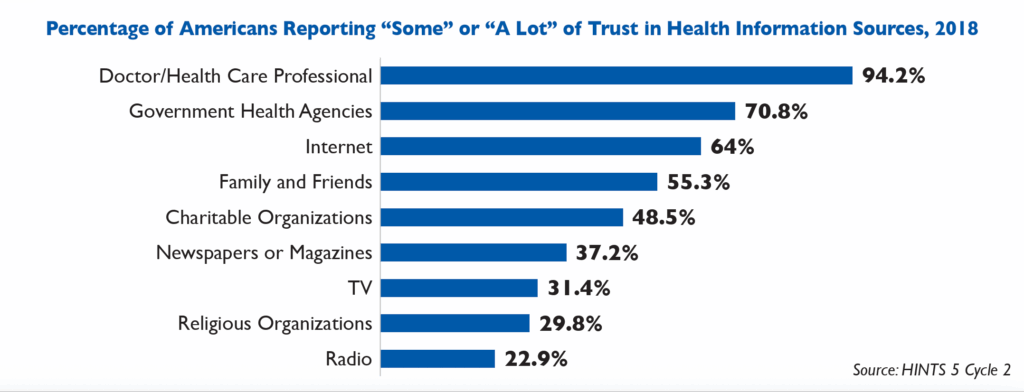
For clinicians:
Just as researchers can increase the impact of their work by communicating clearly, clinicians can make a difference in every interaction with their patients.
As a clinician, you are at the front lines of health communication. Americans consistently rank their doctor or health care professional as the number one person they trust for information about their health10. The way you deliver information can dramatically improve your patients’ understanding, confidence, and health outcomes – including adherence to prescribed medication regimens and treatment plans.
Consider taking these approaches:
Avoid medical jargon when possible and explain terms in everyday language. Encouraging patients to speak up if they don’t understand, and reassuring them that all questions are welcome, builds trust.
- For example, if you’re providing counseling about birth control options, consider asking the patient if they have any concerns or further questions about the methods you’ve discussed.
- Another example of accessible scientific communication about the body can be found in an animation about the menstrual cycle for the Museum of Science here.
After giving instructions, ask patients to explain in their own words what they plan to do next. This helps ensure you’re both on the same page. Learn more here.
Written or visual materials can help patients remember important information. Many leading health care associations and nonprofit groups develop patient-friendly materials for physicians to use.
By focusing on best practices in health communication, you empower your patients to take charge of their health and reduce the risk of confusion or misunderstandings.
Key takeaways
Health literacy isn’t just an individual responsibility; it’s a shared commitment among all of us. By discussing health information more clearly, improving access to important resources, and fostering open communication, everyone can make a difference. This Health Literacy Month, try taking one small step: like asking for clarification, simplifying your next research summary, or trying a new communication technique in clinic. Together, we can turn important scientific knowledge into better health for everyone.
References
1: U.S. Department of Health and Human Services, “Health Literacy in Healthy People 2030,” [Online]. Available: https://odphp.health.gov/healthypeople/priority-areas/health-literacy-healthy-people-2030. [Accessed September 2025].
2: National Center for Education Statistics, “Explore Results for the 2024 NAEP Reading Assessment,” January 2025. [Online]. Available: https://www.nationsreportcard.gov/reports/reading/2024/g4_8/?grade=8.
3: National Center for Education Statistics, “U.S. Adults Score on Par With International Average in Literacy Skills, Below International Average in Numeracy and Problem-Solving Skills in Survey of Adult Skills,” 10 December 2024. [Online]. Available: https://nces.ed.gov/whatsnew/press_releases/12_10_2024.asp.
4: Z. S. Morris, S. Wooding and J. Grant, “The answer is 17 years, what is the question: understanding time lags in translational research,” Journal of the Royal Society of Medicine, vol. 104, no. 12, pp. 510-520, 2011.
5: National Center for Education Statistics, “Highlights of the 2023 U.S. PIAAC Results,” [Online]. Available: https://nces.ed.gov/surveys/piaac/2023/national_results.asp. [Accessed September 2025].
6: T. Okuhara, E. Furukawa, H. Okada, R. Yokota and T. Kiuchi, “Readability of written information for patients across 30 years: A systematic review of systematic reviews,” Patient Education and Counseling, vol. 135, no. 108656, 2025.
7: S. S. Coughlin, M. Vernon, C. Hatzigeorgiou and V. George, “Health Literacy, Social Determinants of Health, and Disease Prevention and Control,” J Environ Health Sci, vol. 16, no. 6, 2021.
8: H. Budde, G. A. Williams, G. Scarpetti, M. Kroezen and C. B. Maier, “What are patient navigators and how can they improve integration of care?,” World Health Organization, Copenhagen, 2022.
9: M. Bishop, “Healthcare Social Media for Consumer Informatics: Solutions for Health and Health Care,” in Consumer Informatics and Digital Health, Springer, 2019, pp. 61-86.
10: National Cancer Institute, “HINTS Brief 39: Trust in Health Information Sources among American Adults,” May 2019. [Online]. Available: https://hints.cancer.gov/docs/Briefs/HINTS_Brief_39.pdf.

